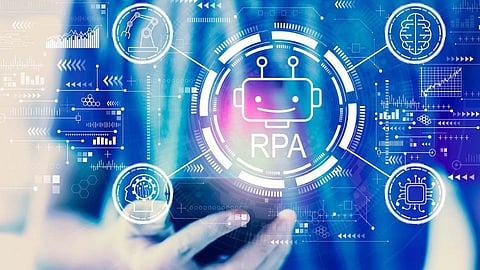

A requirement for automating tasks previously performed by humans was reduced through machine learning (ML) and robotic process automation (RPA). Organizations, on the other hand, are having trouble integrating machine learning and robotic process automation, which is prompting many digital transformation projects to collapse. Process mining (PM) techniques assist in deciding what should and should not be automated. Surprisingly, most systems function best when human and computer intelligence are combined. As a result, humans connect Hybrid Intelligence (HI) to RPA and PM-based systems integration and automation.
Human and Artificial Intelligence are merged in Hybrid Intelligence to produce higher performance and learn from one another. In the digital era, it will be the most popular workplace model. Since the brain and artificial intelligence use radically different algorithms, each excels at tasks where the other falls short. This is why they must cooperate.
Via human–machine interaction and cooperation, HI focuses on making AI a deep extension of human intelligence, which has fundamental scientific significance and massive industrial opportunities.
Robotic Process Automation (RPA) is a technology that enables anybody to set up computer software, or a robot, to replicate and incorporate the behavior of a person communicating with digital systems to complete business operations. RPA robots, like humans, use the operating system to collect data and manipulate programmes. If needed to execute a wide range of repetitive activities, they perceive, activate responses, and interact with other systems.
Process mining refers to the process of using data from your IT systems to extract information into your business operations. Its methods rely on event data to expose what individuals, computers, and organizations are actually up to. People and software robots communicate with corporate IT programs, and those systems record their actions.
Process mining and robotic process automation (RPA) complement each other. In recent times, developments in digitalization, business intelligence, and data processing in particular have helped the rapid rise of both RPA and process mining. Now is the time to put both technologies to work in your business.
For instance, according to Abbyy, "The UK is making great strides in adopting process automation technologies like robotic process automation (RPA) and process mining, according to new research from digital intelligence company ABBYY.
The research report found that 64% of UK businesses are already using process mining technologies, with almost 3 in 10 (28%) currently using RPA and a further 34% intending to start in the next year. This comes as no surprise, since a vast majority believes that process mining (91%) and RPA (87%) are, or would be, useful to their business."
As per a report from PEX Network, the research mentions that process mining techniques use event data to show what people, machines, applications, and organizations are really doing. Process mining provides novel insights that can be used to identify and address performance and compliance problems. Traditional process automation focuses on the most frequent activities and process variants. Less frequent activities and process variants need to be handled by workers that exploit human flexibility and creativity. RPA focuses on the middle part, i.e., routine work that is not frequent enough to be automated in the traditional sense. Process mining is a crucial technology to identify routine work that can be supported using RPA. Therefore, we claim that process mining can be used to pick the "automation battles" that are cost-effective and feasible. This vision matches well with the notion of Hybrid Intelligence (HI).
Join our WhatsApp Channel to get the latest news, exclusives and videos on WhatsApp
_____________
Disclaimer: Analytics Insight does not provide financial advice or guidance. Also note that the cryptocurrencies mentioned/listed on the website could potentially be scams, i.e. designed to induce you to invest financial resources that may be lost forever and not be recoverable once investments are made. You are responsible for conducting your own research (DYOR) before making any investments. Read more here.
